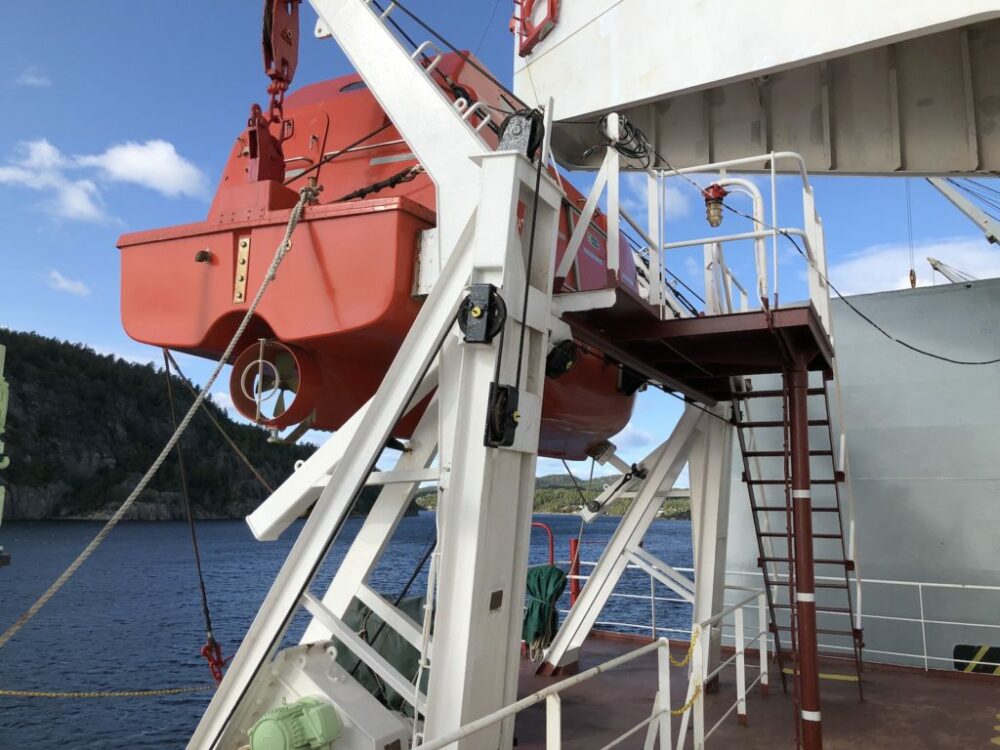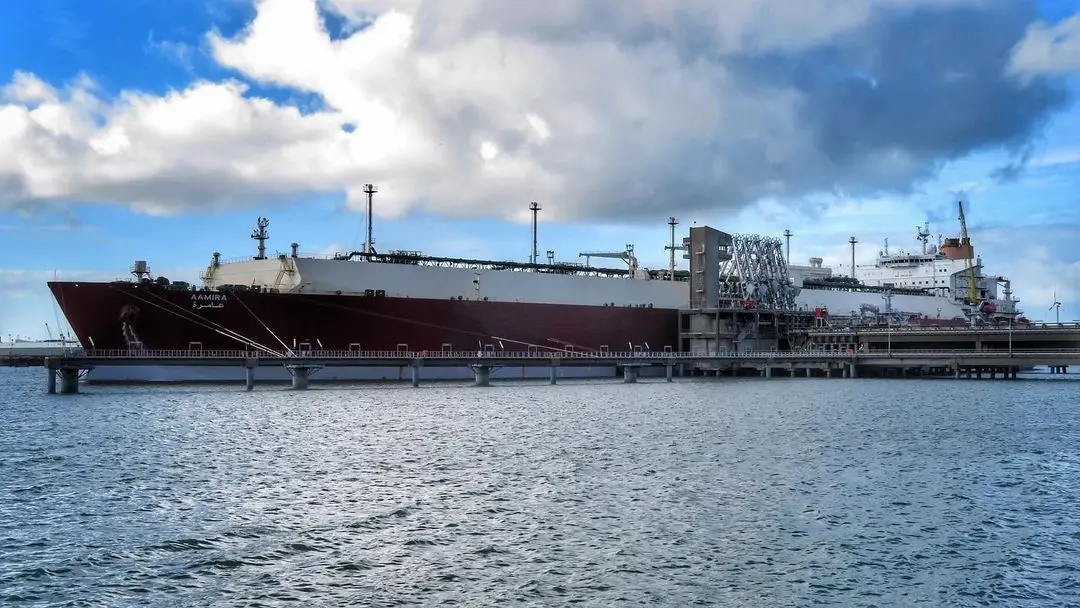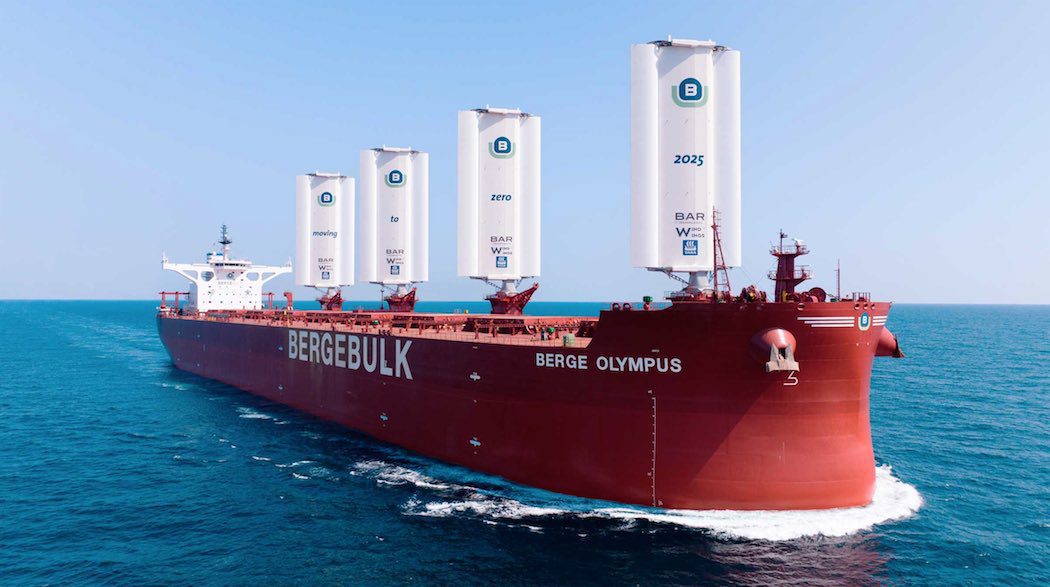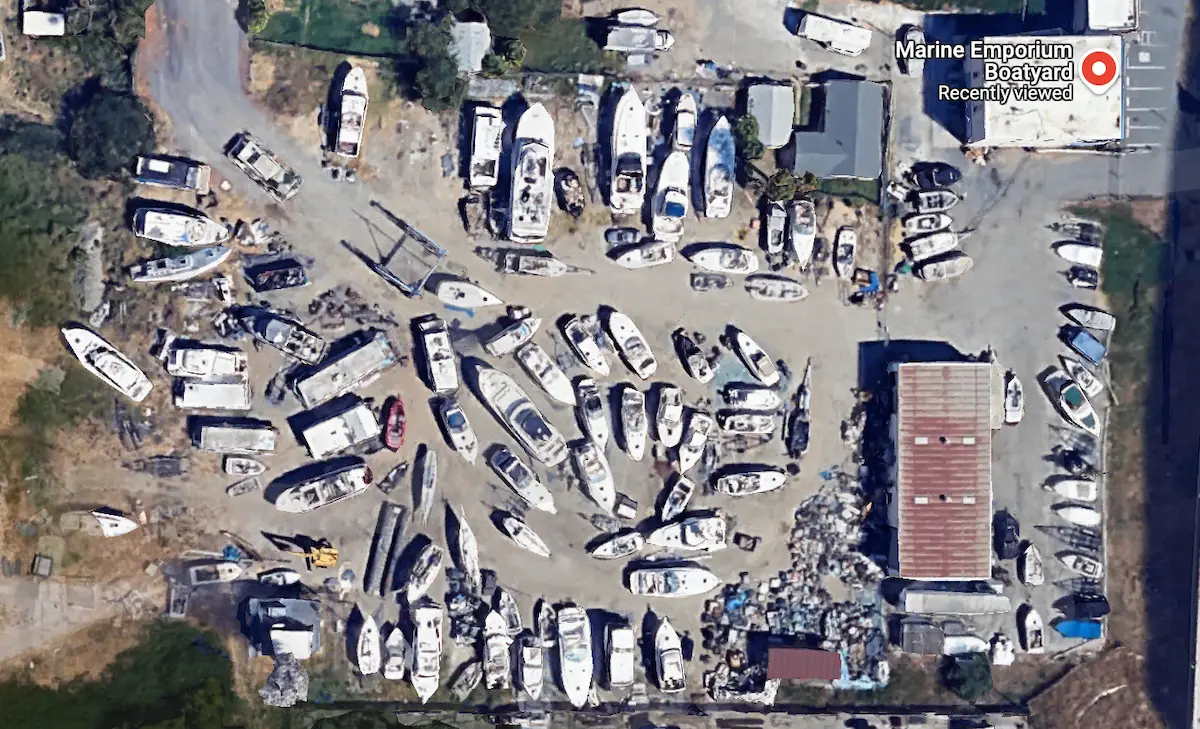“It takes practice to be good at something” is a common quote that we hear every day. For the officers and crew to efficiently operate the vessel, they would perform drills on board the ship.
Ship drills onboard merchant vessels are training crew members to act in emergency situations like fire, collision, grounding, and other scenarios. The ship’s crew is divided into the bridge team emergency squad support team medical squad and engine room teams have their tasks and are headed by the Master of the ship.

As much as there are similarities in how they conduct their drills, some ships, particularly the passenger and cruise vessels with a large number of lifeboats, do their drills differently because of their cargo.
What Is A Drill In Shipping?
A ship drill is a practice session on a vessel to prepare the crew for emergencies like fires, groundings, or collisions. These drills train the crew in their roles, use of equipment, and emergency procedures, ensuring effective responses to various scenarios. They are regulated by international maritime safety laws.
A drill allows crew members to simulate actions to take in the event of an emergency. A typical 20-man crew vessel would be divided into five teams. These are the bridge, emergency squad, support, medical squad, and engine room teams.
The Master, in coordination with concerned officers, would do either a scheduled or surprise drill. This would normally happen on a weekend, Saturday or Sunday. The most common drill is the fire drill and abandon ship drills.
Any drill onboard would start with either a general alarm, fire, abandon ship, or other specified alarm. It will be followed by an announcement of the Master or the Officer on the watch (OoW) over the public address system, detailing the nature of the drill.
All crew would then muster at the designated emergency headquarters. This is to check if anyone is missing and will trigger a search and rescue operation. If all is accounted for, respective squads will proceed to their assigned stations with their necessary equipment.
The bridge team is composed of the Captain, Third Officer, Able seaman, and Cadet. The Master oversees the entire drill and monitors the progress. The third officer assists the Captain and is in charge of communications with other vessels and stations. Steering is placed in manual mode and is manned by the helmsman. The Cadet will assist as needed.
The emergency squad is headed by the Chief Officer if the emergency is on deck and the Second Engineer if the drill is in the engine room. Bosun assists the Chief officer in preparing deck gear like fire hydrants, hoses, lifeboats, rafts, etc. They are also being supported by an able seaman and an ordinary seaman.
The Support squad is led by a Second engineer who complements the emergency squad. In the event of a fire, they act as a cooling blanket in adjacent areas while in an abandon ship drill, they prepare the rafts and life-saving equipment. An Oiler, Wiper, and messmate complete the team.
The medical team is being commanded by the Second Officer who is also in charge of the Ship’s hospital and medical supplies. The medical squad is also assigned to one lifeboat in the event of an abandon ship drill. The other members are a third engineer, an able seaman, an oiler, and a chief cook.
Lastly, the engine room team, which is stationed in the engine control room is led by Chief Engineer, fourth engineer, oiler number one, wiper, and cadet. They place the main engine on standby mode and await instructions from the bridge.
Why Are Drills Important Onboard?
Solas Chapter III Regulation 19 states that every crew member with assigned emergency duties shall be familiar with these duties before the voyage begins. This is important because an accident can happen at any time. This is critically important especially if there is a change of crew and more than fifty percent are new.
Drills allow each crew member to be familiar with his/her role and responsibilities in the event of an emergency. Each task is explained by management officers and the equipment needed is tested and checked for any malfunctions and/or repairs.
During port entry, authorities like coastguards, company representatives, and classification societies would conduct internal and external audits to ensure the competence of the crew during emergencies. All documents are presented to confirm all firefighting, lifesaving equipment, etc., are properly maintained.
List Of Mandatory Drills Onboard Ship
To ensure the safety of crew members and the vessel, various mandatory drills are conducted regularly onboard ships. These drills are designed to prepare the crew for potential emergencies and ensure everyone knows their roles and responsibilities. Below are some of the key mandatory drills.
Fire Drill
Fire drills are conducted twice a month or as much as practicable and the situation allows, following SOLAS Regulation 19, 3.5. Emergency fire pumps are tested regularly to ensure teams can combat fires either on deck or in the engine room, as required by SOLAS Chapter II-2 Regulation 15, 2.2.5.
Fire hydrants, hoses, self-contained breathing apparatus, emergency escape breathing devices, and other safety equipment are tested regularly to meet industry-required standard operating procedures and SOLAS standards.
Abandon Ship Drill
The entire crew is divided into two lifeboats located on the portside and starboard side of the vessel. Some ships employ a single free-fall lifeboat at the stern of the ship.
Abandon ship drills shall include the following as per SOLAS Regulation 19, 3.4:
- Summoning passengers and crew to muster stations with the alarm required by Regulation 6.4.2, followed by a drill announcement on the public address system or other communication system. Ensuring passengers and crew are aware of the order to abandon ship.
- Reporting to stations and preparing for duties described in the muster list.
- Checking that passengers and crew are suitably dressed.
- Checking that lifejackets are correctly donned.
- Lowering of at least one lifeboat after necessary preparation for launching. Different lifeboats shall be lowered at successive drills as far as practicable (Regulation 19, 3.4.2).
- Starting and operating the lifeboat engine.
- Operating davits used for launching liferafts.
- Conducting a mock search and rescue of passengers trapped in their staterooms.
- Instruction in the use of radio life-saving appliances.
Each lifeboat shall be launched, and maneuvered in the water by its assigned operating crew, at least once every three months during an abandon ship drill (Regulation 19, 3.4.3).
In the case of lifeboats arranged for free-fall launching, at least once every three months, the crew shall board the lifeboat, properly secure themselves in their seats, and commence launch procedures up to but not including the actual release of the lifeboat. The lifeboat shall then either be free-fall launched with only the required operating crew on board or lowered into the water by means of secondary launching, with or without the operating crew on board. Thereafter, the lifeboat shall be maneuvered in the water by the operating crew (Regulation 19, 3.4.4).
Lifeboat equipment is presented to each crew member to ensure proper usage during an abandon ship drill.
Emergency lighting for mustering and abandonment shall be tested at each abandon ship drill (Regulation 19, 3.4.9).
Enclosed Space Entry and Rescue Drills
In an enclosed space entry and rescue drill, the emergency squad prepares two team members to enter an enclosed space, such as a cargo hold, ballast tank, or void space. These team members are equipped with self-contained breathing apparatus (SCBA) and an attached communications system, as required by SOLAS Regulation 19, 3.6.2. The support squad uses a multi-gas detector to check and monitor oxygen and gas content within the enclosed space, ensuring safety before entry.
This drill ensures that the crew is prepared to safely enter and perform rescue operations in enclosed spaces. The drill includes the following requirements:
- Preparation: Checking and using personal protective equipment (PPE) required for entry.
- Communication: Checking and using communication equipment and procedures.
- Atmosphere Measurement: Checking and using instruments for measuring the atmosphere in enclosed spaces, such as the multi-gas detector.
- Rescue Equipment: Checking and using rescue equipment and procedures.
- First Aid: Providing instructions in first aid and resuscitation techniques.
According to SOLAS Regulation 19, 3.6, enclosed space entry and rescue drills should be planned and conducted in a safe manner, taking into account the guidance provided in the “Revised Recommendations for entering enclosed spaces aboard ships” (IMO resolution A.1050(27)) and properly planned and documented enclosed entry permits.
Emergency Steering Drill
In an emergency steering drill, all teams except the bridge team proceed to the steering gear room near the engine room to simulate a malfunction of the bridge steering system. Members steer the ship directly from the steering gear room in close coordination with the bridge team, receiving helm commands and instructions.
This drill ensures that the crew is prepared to take control of the ship from the steering gear room in case of an emergency. The drill includes checking and testing the main and auxiliary steering gear, remote control systems, emergency power supply, communication systems, and rudder angle indicators.
According to SOLAS Chapter V, Regulation 26-4, emergency steering drills must take place at least once every three months. These drills must include direct control within the steering gear compartment, communication procedures with the navigation bridge, and operation of alternative power supplies, where applicable. The date and details of each drill must be recorded in the ship’s log.
Ship Security Drill
A Ship Security Drill is an essential and mandatory exercise conducted to ensure the ship’s security measures are effective and that the crew is prepared to respond to security threats and incidents.
These drills are mandated by the International Ship and Port Facility Security (ISPS) Code, which supplements the International Convention for the Safety of Life at Sea (SOLAS) Chapter XI-2 on Special Measures to Enhance Maritime Security.
Key aspects of a Ship Security Drill include:
- Testing Security Plans: The drill tests the ship’s security plan (SSP) and procedures for responding to security alerts and incidents, in accordance with SOLAS Chapter XI-2 and ISPS Code Regulation 9 Ship Security Plan.
- Frequency: Drills must be conducted at least once every three months, as required by ISPS Code Regulation 13.4.
- Participants: The drill involves the Company Security Officer (CSO), Ship Security Officer (SSO), relevant shore-based personnel, and other shipboard personnel with security duties, as specified in ISPS Code Regulation 13.2.
- Scenarios: Various scenarios are simulated to assess the crew’s readiness and the effectiveness of security measures, as outlined in ISPS Code Regulation 13.4.
- Coordination: The drill ensures coordination between the ship and port facilities, if applicable.
- Record Keeping: Details of the drill, including the date and observations, must be recorded in the ship’s log, in compliance with ISPS Code Regulation 10.1.
These drills are crucial for maintaining a high level of security awareness and preparedness among the crew, ensuring the safety of the ship, its cargo, and personnel.
References: SOLAS Chapter XI-2; ISPS Code Regulations 9, ,10.1, 13.2, 13.4, and 13.5
Non-Mandatory Drills
While not required by regulations such as the SOLAS and ISPS codes, non-mandatory drills play a crucial role in enhancing the overall safety and preparedness of the crew on board. These drills, often implemented as part of a company’s Safety Management System (SMS), reflect the organization’s commitment to maintaining high safety standards and preparing for a wide range of potential emergencies. Below are some commonly conducted non-mandatory drills:
- Grounding Drill: In this drill, each team is responsible for checking their respective stations for hull damages. The bridge team confirms soundings on the chart or ECDIS and readings on the echo sounder, while the engine room team checks all fuel oil tanks for potential oil spills. Support and medical teams check all ballast tanks, cargo holds, and double bottom tanks for water ingress.
- Helicopter Operation Drill: This drill familiarizes the crew with the helipad location and procedures for helicopter operations. It is essential for air transfer of injured persons, pilot embarkation, and crew abandon ship scenarios. The crew is briefed on safety measures to avoid injury, electrocution, or explosion during helicopter operations.
- Collision Drill: During a collision drill, the emergency squad assesses the possible area of collision to determine the extent of damage and check for water ingress or oil spills. The drill also involves preparing fire hoses and hydrants for potential fires or explosions and placing the engine room team on standby.
- Man Overboard Drill: This drill simulates a man overboard (MOB) situation by placing a mark in the water. The engine room team puts the engine on standby, while the bridge maneuvers the vessel to recover the mark/victim. The support squad assists in the recovery and provides first aid and treatment as needed.
- Engine Room Fire Drill: In this scenario, the support squad, familiar with the engine room, leads the firefighting efforts. The emergency team provides cooling to adjacent areas, and the medical team monitors progress and provides first aid if necessary. The Master oversees the drill from the bridge in close coordination with the Chief Engineer.
- Oil Spill Drill: The ship simulates an oil spill scenario, either on deck or in the water. Two teams prepare the SOPEP (Ship Oil Pollution Emergency Plan) equipment to respond to the spill. The bridge team sends a message to authorities about the incident.
By conducting these non-mandatory drills regularly, the crew remains vigilant and well-prepared to handle a variety of emergency situations, ensuring the safety and security of everyone on board.
Ship Drill Schedule
Adherence to a well-planned drill schedule is crucial on board any vessel. This schedule aims to familiarize the crew with their emergency duties, ensure the readiness of the safety and survival equipment, and prepare the ship’s crew for any unexpected emergency situations.
It also fulfills the regulatory requirements as per the International Maritime Organization (IMO) and Safety of Life at Sea (SOLAS) regulations. The frequency and type of drills are mandated by these international maritime safety regulations, although additional drills may be added by the ship’s management as required.
The schedule should be tailored to the specific vessel and crew, considering factors such as the ship’s operation, crew experience, and operational risks.
Here is an overview of some of the main types of drills, their frequency, and the relevant regulations:
| Type of Drill | Frequency | Reference to Regulation |
|---|---|---|
| Fire Drill | Twice a month | SOLAS Chapter III Regulation 19.3.4.3 |
| Abandon Ship Drill | Once every month | SOLAS Chapter III Regulation 19.3.4.4 |
| Grounding Drill | Every three months | Company’s Safety Management System (SMS) |
| Ship Security Drill | Every three months | SOLAS Chapter XI-2; ISPS Code Regulations 8, 9, 13.2, 13.4, and 13.5 |
| Helicopter Operation Drill | As per company policy and when required by port state control | Company’s Safety Management System (SMS) |
| Collision Drill | Every three months | Company’s Safety Management System (SMS) |
| Man Overboard Drill | Every three months | Company’s Safety Management System (SMS) |
| Engine Room Fire Drill | Twice a month | Company’s Safety Management System (SMS) |
| Oil Spill Drill | Every six months | Company’s Safety Management System (SMS) |
| Enclosed Space Entry and Rescue Drills | Once every two months | SOLAS Chapter III Regulation 19-3.6.2 |
| Emergency Steering Drill | Every three months | SOLAS Chapter III Regulation 26-4 |
It is essential to note that this table serves as a guideline. For the exact details, the crew should refer to the regulations and the vessel’s specific SMS.
Also, all drills should be followed by a debriefing session to review performance, discuss any issues or deficiencies identified during the drill, and explore how they can be addressed. The ship’s Master should record all drills in the ship’s logbook and in any other documentation required by the company or authorities.
Ship Drill Reporting
Maintaining a record of conducted drills is an integral part of the ship’s safety and emergency preparedness protocol. This is where the concept of a ‘Ship Drill Report’ comes in.
The ship drill report provides a comprehensive and systematic record of every drill carried out onboard. It not only covers the basic details such as the date, time, and type of drill conducted, but it also elaborates on the individual performances, equipment used, and any discrepancies or areas of improvement identified during the drill.
Ship Drill Reporting Software
With advancements in technology, the shipping industry is also evolving, and digital solutions are increasingly being integrated into maritime operations.
Ship drill reporting software is a specialized program designed to facilitate easier and more efficient logging, tracking, and management of drills and exercises conducted onboard.
This software not only allows for a streamlined process of entering the details of each drill but also offers features such as automatic reminders for upcoming drills based on the pre-set schedules, easy updating of equipment inventories, real-time data syncing, and so forth. Additionally, the software provides easy accessibility to drill records, which can be vital during audits, inspections, or any emergency situation.
Ship Fire Drill Report Sample
A ship fire drill report is a specific type of ship drill report that documents all the details pertaining to a fire drill conducted onboard. Here is a simplified example of what such a report might contain:
- Date & Time of Drill: 1st August 2023, 10:00 am
- Type of Drill: Fire Drill
- Location of simulated fire: Engine Room
- Duration of Drill: 40 minutes
- Participating Crew Members: Master, Chief Officer, Second Engineer, Third Engineer, Able Seamen, Deck Cadet, etc.
- Brief Description of Drill: Simulation of engine room fire, activation of general alarm, muster at designated emergency stations, deployment of fire-fighting equipment, initiation of fire-fighting procedures.
- Equipment Used: Fire hydrants, hoses, self-contained breathing apparatus, emergency escape breathing devices, fire suits, etc.
- Performance Evaluation: All team members arrived at their stations promptly, fire-fighting equipment was correctly deployed and used, and communication was clear and efficient.
- Areas of Improvement: Brief delay in the deployment of fire hoses, communication needs to be louder and clearer, and additional training is required for the usage of self-contained breathing apparatus.
- Action Taken: Re-training scheduled for the usage of fire hoses self-contained breathing apparatus, and walkie-talkies to be used for clearer communication during drills.
- Signatures of Master & Participating Officers
Each ship may have its own unique format and additional details included in its fire drill report, as guided by its company policy and safety management system. However, the fundamental goal remains the same: to ensure that all crew members are prepared to respond effectively to a fire emergency onboard.
- Types of Gas Carriers as per IGC Code – April 22, 2025
- Wind-Assisted Propulsion Systems (WAPS): A Game Changer for Maritime Decarbonization – February 6, 2025
- 10 Boat Salvage Yards in California – January 25, 2025



